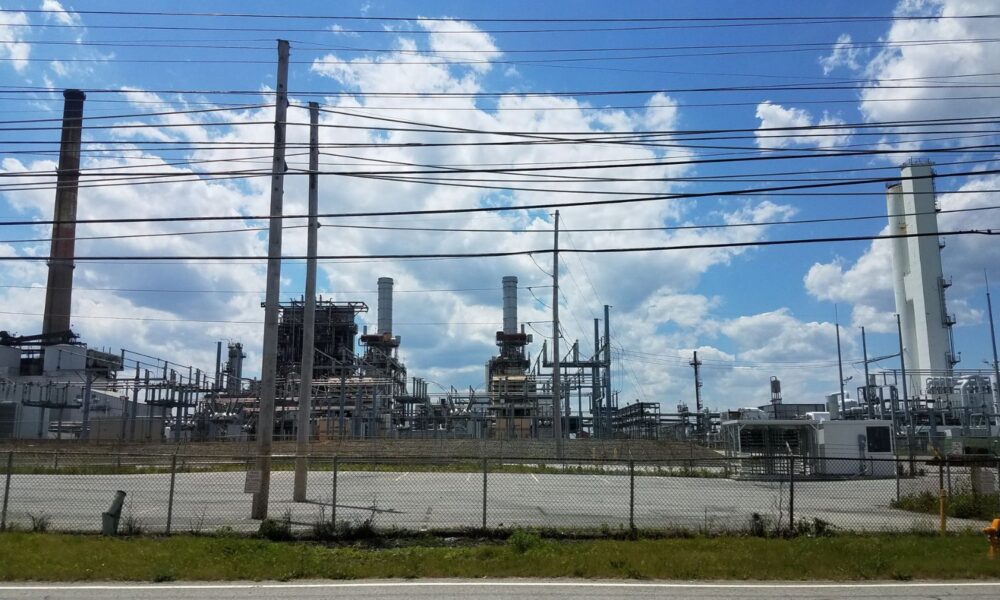Yesterday evening, I provided testimony to the US Environmental Protection Agency (EPA) at a public hearing on the proposed rule on the Risk Management Program (RMP). The RMP requires the roughly 12,000 facilities across the United States that use extremely hazardous substances to develop Risk Management Plans that identify prevention and response measures for chemical disasters. The program was gutted in 2019 under the Trump administration and, following a series of listening sessions in 2021, the EPA under Michael Regan’s leadership proposed the “Safer Communities by Chemical Accident Prevention” rule. The proposal partially restores some prevention and response measures, but we think the rule could go further to prevent catastrophic incidents and protect public health and safety.
This week, EPA held three days of public hearings where chemical safety and environmental justice advocates, community organizers, and public health practitioners shared their expertise and called for a stronger rule. I testified alongside two of my UCS colleagues, calling on EPA to require RMP facilities to implement measures to prevent releases during extreme weather events; to require facilities to transition to safer processes and technologies; and to provide public, online access to RMP facility information and risk management plans.
In addition to this week’s hearings, EPA is accepting written comments on the rule through October 31. For tips on writing a public comment of your own, see our comment guide on this issue.
Here’s my full testimony:
Hello, my name is Darya Minovi and I’m a Senior Analyst at the Union of Concerned Scientists (UCS).
We are encouraged to see that EPA has explicitly required, for the first time, consideration of natural hazards, such as flooding, wildfires, and winter storms in hazard reviews for Program 2 and 3 facilities. The science on the accelerating climate crisis is clear, and its far past time that the agency requires facilities to account for these inevitable and worsening hazards. As revealed in a 2021 analysis co-authored by UCS, at least one-third of RMP facilities nationwide are located in areas at risk of inland and coastal flooding, storm surge, or wildfires. A report published by the U.S. Government Accountability Office earlier this year had similar findings.
We urge EPA to maintain this proposed requirement but believe it can be strengthened. To ensure that hazards are not only assessed, but also addressed, EPA must require facilities vulnerable to natural hazards to implement measures to prevent chemical disasters, such as backup power systems. Without a requirement, facilities may not be adequately equipped to prevent double disasters – incidents where a severe weather event, which alone may be extremely damaging, catalyzes a catastrophic chemical disaster that causes compounding harm. These incidents also stand to disproportionately harm people of color, as EPA’s own research shows that the worst effects of climate change will be felt by Black, Latinx, and Indigenous communities.
We would also like to urge EPA to heed the recommendation of many others testifying this week, to expand the scope of the Safer Technology Alternatives Assessment, or STAA. The current proposal limits the STAA requirement to less than five percent of RMP facilities, and EPA has not provided sufficient evidence for why the proposal focuses only on refineries and chemical manufacturers within one mile of one another. The people who live and work near these facilities already face the burden of ongoing, everyday emissions of toxic substances, in addition to the risk of a hazardous incident. Furthermore, limiting the STAA is in direct opposition with EPA’s own rationale. When developing the 2017 Chemical Disaster Rule, the agency wrote that “the first choice for managing chemical hazards and risks is the use of inherently safer technology or inherently safer design.” EPA must require an STAA and implementation of inherently safer technologies and design for all of the most potentially dangerous facilities, including petroleum, coal, chemical, and pulp and paper manufacturing processes, and wastewater treatment and fertilizer plants.
If EPA is to fulfill its commitment to advance environmental justice, and work to remedy decades of harm to fenceline communities, the agency must prioritize prevention measures in the final rule. While we’re encouraged by the expanded scope of hazard reviews, merely requiring facilities to assess hazards does not ensure that these harms are alleviated. The nearly 200 million people who live in worst case scenario zones for chemical disasters can no longer be responsible for holding these facilities accountable. We will submit more detailed written comments and look forward to seeing a final rule that prioritizes public and worker safety over the needs of corporations that stand to financially benefit from weak regulation. Thank you.

